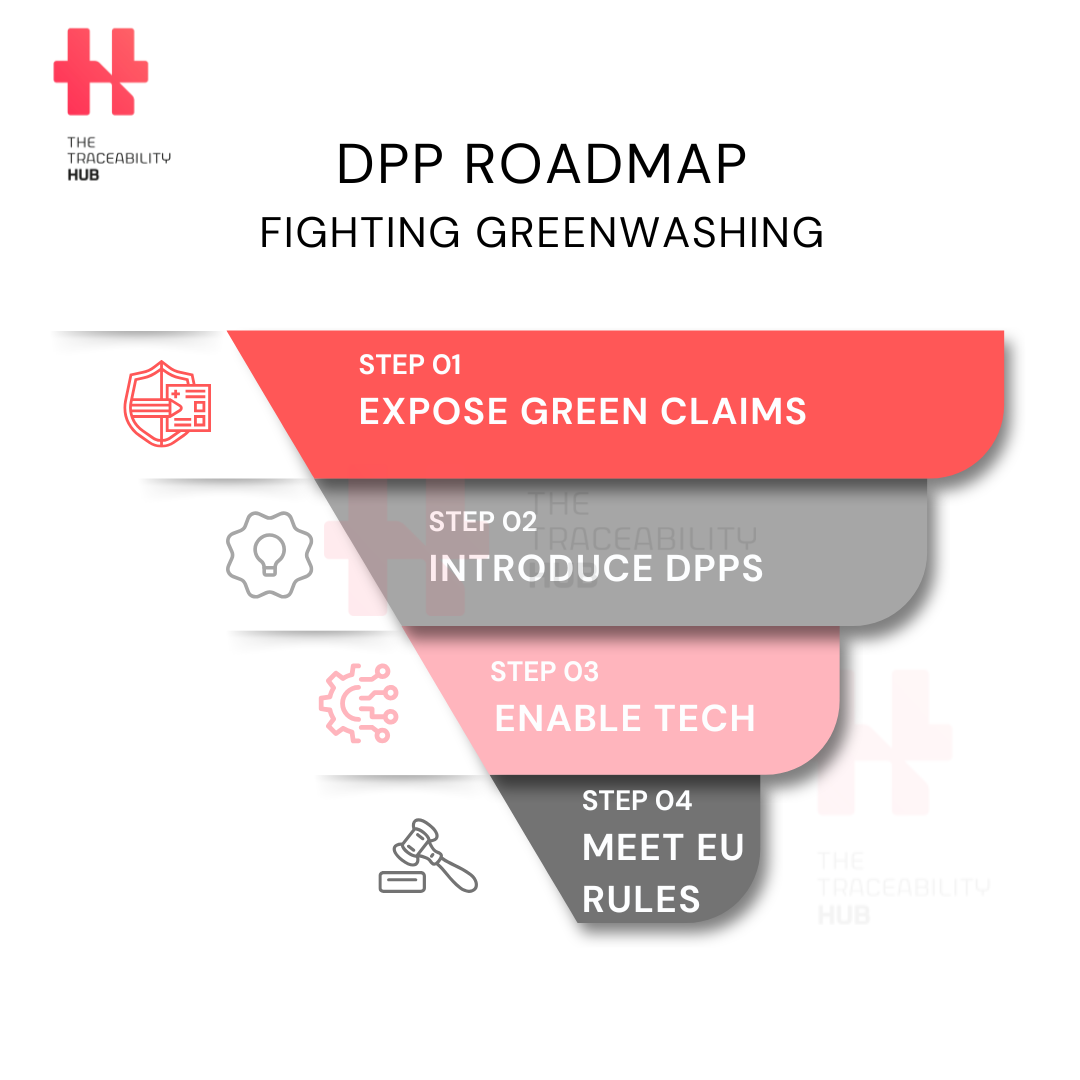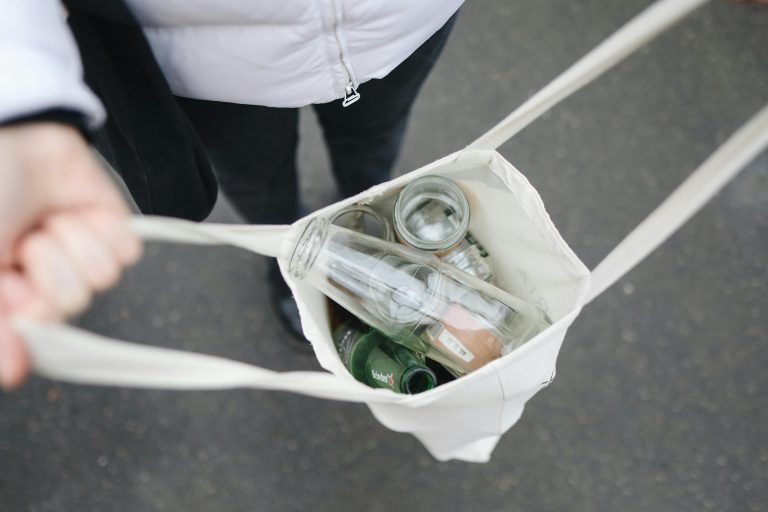The numbers tell a compelling story. About 84% of customers stay away from brands with poor environmental practices. People care more about sustainability than ever before. In fact, 66% are ready to pay extra for sustainable products. But there’s a problem. Companies make green claims that don’t add up – 53% of these claims are vague or misleading, and 40% lack proof. This creates a major trust issue in the market.
Digital product passports could change everything. These complete digital records track a product’s whole experience and bring real transparency to the table. The market for these passports keeps growing faster. Numbers show it will jump from $0.2 billion in 2024 to $0.9 billion by 2030, with a CAGR of 30.8%. This growth shows their value in the circular economy, especially when you have nearly 90% of the EU’s material resources going to waste after one use.
This piece will show you how digital product passports work. You’ll learn why businesses that care about real sustainability need them and how they protect both consumers and companies from false environmental claims.
Understanding Greenwashing in Modern Sustainability Claims
Modern consumers struggle with a troubling paradox in the sustainability marketplace. Research shows 53% of green claims contain vague, misleading, or unfounded information. Unclear sustainability messaging and communication traps can either be intentional or unintentional.
Poor sustainability messaging erodes stakeholder and consumers trust, creating cynicism: trust erodes further as 40% of these claims lack any supporting evidence. This systemic deception, known as greenwashing, takes sophisticated forms that undermine real green practices and consumer confidence.
Greenlighting and Exaggerated Eco-Initiatives
Companies use greenlighting to spotlight specific environmentally friendly aspects while hiding less sustainable practices elsewhere. Businesses show this tactic through “lighthouse initiatives” – visible, easy-to-communicate projects that create an illusion of environmental commitment while doing little else toward sustainability.
Some corporations keep moving their focus between different environmental concerns – from climate change policies to plastic reduction to biodiversity initiatives. This allows their previous commitments to fade quietly. Others join organizations with appealing names and visions but create minimal environmental effect, which essentially stalls their real progress.
The European Commission found 42% of all green claims were exaggerated, false, or deceptive. A landmark report revealed an even more startling fact – 95% of consumer products that claimed to be green committed at least one form of greenwashing. These numbers paint a clear picture of how deep these problems run.
The company sustainability goals may not be confident and realistic, they have not been resourced appropriately or authenticity reviewed. Instead many checks and controls should be in place to avoid vague, partial or inconsistent messaging, to deliver sustainability message at the right elevation and to avoid overblowing the claims. At the same time the language used must be precise, accurate and compliant, the data accurate, relevant, representative and credible.
And the partnerships with other organizations should be analyzed about the sustainability impact.
Companies should understand what type of information do the consumers ask for, and then make sure if the sustainability communication meet their expectations. The gaps may also concern the expectation of the company about the information communicated, which is not always clear to them, including the call to action for the consumers: is it an information or is it an agency for action? Is it consistent with the values or the culture?
Greenlabelling Without Material Transparency
Greenlabelling tricks consumers through eco-labels that falsely suggest products are greener than reality. Companies use vague terms like “eco-friendly,” “all-natural,” or “green” without clear definitions or proof.
To cite an instance, see these common tactics:
- Environmental buzzwords with no legal weight or regulation
- Symbols that look like trusted certifications
- One environmental benefit highlighted while hiding other effects
- Claims about avoiding already illegal practices
Many products promote environmental benefits without showing their full lifecycle effect. A plastic bottle might carry an “eco-friendly” label just because someone can recycle it, despite harmful chemicals used in production. So, this selective disclosure creates a misleading picture of a product’s real environmental footprint.
Greenhushing and Data Omission in ESG Reports
Greenhushing stands out as the most dangerous trend in corporate sustainability communication. Unlike greenwashing’s exaggerated claims, greenhushing happens when companies deliberately hide information or downplay their ESG achievements to avoid scrutiny.
South Pole’s survey revealed troubling facts – 44% of companies say external communication on climate targets has become harder recently. The numbers get worse with 58% reducing communications and 18% having no plans to share their science-based targets. This silence doesn’t mean inaction – companies fear backlash if they miss targets or face greenwashing accusations when promoting their efforts.
Greenhushing threatens climate action by breaking up information needed for shared environmental progress. Organizations that hide their sustainability position deny stakeholders access to real problems and miss chances to inspire meaningful change.
The Role of Digital Product Passports in Verifying Claims
DPP Roadmap

Digital product passports offer a strong solution to these deceptive practices. They create transparent, verifiable records of a product’s complete lifecycle and make it harder for companies to hide environmental effects. This technology could revolutionize how we verify and communicate sustainability claims.
Digital product passports (DPPs) are the foundations of tomorrow’s circular economy. These electronic “identity cards” make it easier to verify sustainability claims. Products now leave a clear trail throughout their lifecycle, making it nowhere near as easy to make false environmental claims.
How Do Digital Product Passports Work?
Digital product passports act as detailed digital records linked to physical products. They contain specific data about materials, sustainability profiles, and manufacturing processes. Traditional systems only focus on marketing data. DPPs take a different approach by combining product identification, sustainability metrics, and circularity information in a regulated, permissioned format.
A DPP creates a digital twin of a physical product. It records event-based, transactional, and sustainability data throughout the product’s lifecycle. This system lets you:
- Track verified material composition ( for the textile: fiber origins, chemical treatments, recycled content, etc.)
- Document production locations with working conditions information
- Measure environmental impact (carbon emissions, water usage)
- Record technical performance data (durability, wear resistance, safety compliance)
- Keep repair and maintenance records
- Assess end-of-life recycling capabilities and material recovery potential
The DPP updates continuously as products move through different lifecycle stages. This ensures stakeholders can access accurate, current information about environmental impact and compliance status.
QR Code and NFC-Based Access to Lifecycle Data
DPPs need physical links to products through data carriers to work properly. The European Commission allows flexibility in choosing data carrier technology. Here are the most common options:
QR codes: These two-dimensional barcodes see widespread use across industries. Consumers can scan a QR code on a product label with their smartphone camera to access the digital product passport. QR codes are cost-effective but might wear out or need removal for esthetic reasons.
NFC tags: Near Field Communication technology uses tiny, battery-less connectivity chips built into products. Most modern smartphones can read NFC tags, offering easy “tap-to-access” functionality, better durability, and improved security. These tags can hide inside products instead of external surfaces, making them tamper-resistant.
RFID technology: Radio-frequency identification brings advanced capabilities to DPPs, especially for automatic identification without line-of-sight scanning. RFID tags can update data throughout the product lifecycle—essential for accurate maintenance records and compliance certifications.
Data carriers must meet ISO/IEC 15459:2015 standards to work with other digital product passports worldwide.
Paper-based smart labels: an emerging and practical solution for implementing DPPs especially in industries like fashion, packaging, and generally consumer goods. They also embed in or print on paper electronics and circuits, they are biodegradable and recyclable, digitally interactive, enabling traceability and transparency.
Material Sourcing and Recyclability Tracking
In resource-constrained environments, with a geopolitical uncertainty, against a backdrop of turbulent markets and regulatory changes, supply chain must create opportunities to collaborate with industry partners and organizations throughout the supply chain ecosystem.
Globally, regulations are moving in divergent directions; the United States has withdrawn from the Paris Agreement, the European Union Omnibus proposal will limit the number of companies needing to report on performance. But at the same time sustainability reporting requirements are planned or effective in India, Mexico and Brazil.
DPPs excel at tracking materials throughout the supply chain. This feature fights greenwashing by providing evidence-backed transparency about:
- Material origins (the origin, the factory where it was sewn, etc. including certifications like GOTS for textiles)
- Recycled content percentage in manufacturing
- Hazardous substance presence
- Supply chain carbon footprint
- Production energy and water consumption
- Repair instructions and component replaceability
- End-of-life recyclability and proper disposal methods
A clothing item with a DPP lets consumers validate “organic cotton” claims easily. They can scan the data carrier to see where the cotton grew, check its certifications, and learn how it was processed. The system also validates recyclability claims with specific details about material recovery potential and suitable recycling facilities.
This transparency eliminates selective disclosure—a common greenwashing tactic. DPPs require detailed data disclosure across the entire product lifecycle instead of cherry-picked sustainability attributes.
EU Green Claims Directive and the Push for DPP Adoption
The European Union has taken strong action against misleading environmental claims with a complete set of rules. A 2020 EU study showed that more than half of environmental claims were vague, misleading, or unverified. This created an urgent need for standard verification systems.
Overview of the EU Green Claims Directive
The Green Claims Directive (GCD), proposed in March 2023, sets strict requirements for companies that make voluntary environmental claims. Companies must validate their green claims before publication. This gives consumers clear, reliable information. The European Parliament approved its position on the directive in March 2024. The implementation should happen around 2026.
The GCD doesn’t allow vague environmental terms like “eco-friendly” unless they’re backed by scientific evidence and lifecycle assessments. Companies that don’t follow these rules face heavy penalties. These include fines up to 4% of annual turnover and possible exclusion from public procurement processes for up to 12 months.
Digital Product Passports as Enabler of the Circular Economy
Digital product passports are the life-blood of building a circular economy, which helps achieve climate neutrality. These structured digital records contain vital product information and create never-before-seen transparency across value chains.
The EU will roll out regulations in 2024 that require almost all products sold in the EU to have a Digital Product Passport. This solves a basic problem: the gap between consumers’ need for transparency and the current shortage of reliable product data.
Digital Product Passports realize the circular economy’s potential through:
- Better supply chain visibility and material tracking
- Detailed records of product makeup and environmental effects
- Help with repair, reuse, recycling and end of life choices
- Validation of sustainability claims using evidence-based data
Compliance Requirements under ESPR by 2030
The Ecodesign for Sustainable Products Regulation (ESPR) became law on July 18, 2024. This law creates the legal framework for DPP implementation. The EU wants to double the rate at which materials are reused in its market through this regulation.
The ESPR requires DPPs for products that have high environmental impact or potential for reuse, including:
- Iron and steel
- Aluminum
- Textiles (garments and footwear)
- Furniture and mattresses
- Energy-related products
- Electronics and ICT products
The European Commission will run a public web portal where consumers can search and compare sustainability information from product passports.
The DPP registry will start working by July 19, 2026. The first implementing actions will start in 2025. Medium-sized enterprises have until July 19, 2030 to meet certain disclosure requirements.
Companies operating in the EU market must now get ready to collect and share detailed product information. This ranges from material composition to end-of-life recyclability, using standard digital formats that are available through data carriers like QR codes or NFC tags.
Blockchain-Backed DPPs for Tamper-Proof Sustainability Data
Security issues continue to pose challenges in digital ecosystems, especially when tracking sustainability claims. Blockchain technology can provide a reliable solution for digital product passports (DPPs), with permanent records that stop data manipulation and greenwashing attempts.
Immutable Data Storage Using Blockchain Hashes
Blockchain gives DPP data permanent and transparent storage through a decentralized, secure ledger that resists tampering. Each block in the chain has a unique cryptographic hash – a digital fingerprint that depends on the data inside that block. Each block also links to the previous block’s hash and creates an unbreakable sequence.
This setup makes fraud almost impossible. Any changes to the information will automatically alter the block’s hash. This breaks the chain and triggers instant detection. Blockchain-backed DPPs are fundamentally different from regular databases where someone can change records after the fact.
Brands can keep their DPP content on private servers while the cryptographic hash stays on the blockchain. This approach protects data integrity and maintains privacy. The system works great for checking complex sustainability claims that need both transparency and protection of company information.
Smart Contracts for Automated Updates
Smart contracts boost DPP functionality by running and enforcing preset rules within the blockchain. These self-executing programs automatically update based on real-life events throughout a product’s lifecycle.
Digital product passports use smart contracts to establish conditions for:
- Production verification and standards compliance
- Ownership transfers and custody documentation
- End-of-life recycling confirmation and material recovery
This automation streamlines processes in complex supply chains. It reduces fraud risk and ensures companies follow sustainability standards. Smart contracts remove the need for middlemen: while it cuts down on administrative work and makes operations more efficient, it has also a cost to be considered.
Audit Trails for Regulators and Consumers
Blockchain-backed DPPs create complete, tamper-resistant audit trails. This might be their most powerful benefit. Every transaction becomes provable, traceable, and searchable on-chain, offering unprecedented transparency.
Approved participants—from regulators to concerned consumers—can check this information to verify responsible sourcing and sustainability claims. The permanent nature of blockchain makes compliance checks easier since no one can change recorded information.
Blockchain-powered digital product passports tackle the biggest challenge of trusting sustainability claims. They create verifiable records of environmental performance throughout a product’s lifecycle. This makes selective disclosure or data manipulation virtually impossible and changes how businesses show real sustainability.
Avoiding New Forms of Greenwashing Through DPP Design
Digital product passports are powerful tools against greenwashing, but they can backfire when poorly designed. These systems might create new opportunities for misleading environmental claims. Companies need to watch out for several potential problems to maintain genuine transparency.
Selective Disclosure Risks in DPP Implementation
Digital product passports don’t stop companies from being selective about what information they share. They might choose to show only the good data and hide anything negative. Research from Circularize explains that organizations don’t deal very well with finding the right balance between transparency and data protection. Yes, it is true that security methods like RSA and end-to-end encryption protect sensitive information, but they can work against the transparency that DPPs want to achieve.
Zero-knowledge proofs could be the answer. They let companies validate claims about material composition without showing their private data. In spite of that, companies must implement this carefully to avoid creating another way for potential greenwashing through selective sharing.
Overemphasis on Product Metrics vs. Systemic Issues
The biggest problem is that DPPs look too closely at individual product features. This narrow focus takes attention away from bigger sustainability challenges. Product-level measurements often miss:
- Basic questions about consumption models
- Supply chain effects beyond direct suppliers
- Resource allocation issues across the whole system
DPPs help us learn about specific products in detail, but their design should connect individual measurements and data to bigger sustainability frameworks. Without this connection, they might just become fancy tools and communication traps that show tiny improvements while hiding more serious environmental effects.
Ensuring Labor and Social Data Inclusion
A detailed DPP must cover more than just environmental numbers. Working conditions, fair trade practices, and community effects are the foundations of real sustainability claims.
Studies show that DPPs could add information beyond circular economy metrics. This includes data about modern slavery and child labor. An all-encompassing approach stops companies from looking environmentally friendly while ignoring human welfare – another subtle type of greenwashing.
Digital product passports can stop new forms of greenwashing when companies design them thoughtfully and address these risks systematically.
The Next Frontier in Green Integrity
Market and regulatory conditions are putting sustainability goals under intense pressure.
Digital product passports serve as a powerful defense against widespread greenwashing in today’s marketplace. These digital tools create unmatched transparency in product lifecycles. They effectively counter the 53% of green claims that contain misleading information. DPPs revolutionize sustainability verification by documenting materials, production processes, and environmental effects.
The EU’s new regulations speed up DPP adoption.
Scrutinization of companies’ sustainability claims will increase in the next future. Regulations governing environmentally friendly product labeling, false advertising, consumer protection and competition regulation are being used to test “green claims.” The EU has reached a provisional agreement on new rules to ban misleading green marketing practices.
The Green Claims Directive and Ecodesign for Sustainable Products Regulation create solid frameworks to implement these changes. Companies need to prepare as these requirements take effect, starting from October 2027 and with full compliance expected by 2030.
This push from regulators matches growing consumer interest – 66% of customers will pay more for genuine sustainable products.
When necessary Blockchain technology makes DPPs even stronger by creating tamper-proof records. Smart contracts automatically update throughout a product’s lifecycle. The system’s immutable audit trails offer verification that traditional documentation could never achieve. These safeguards make it harder for companies to hide behind selective disclosure when they try to greenwash products.
Companies should approach DPP implementation carefully to avoid creating new ways for misleading claims. Several risks exist: selective disclosure, too much focus on product-level metrics instead of system-wide issues, and leaving out social and labor data. DPPs must balance detailed product information with broader sustainability frameworks to deliver real transparency.
The future of sustainability verification depends on digital product passports becoming standard practice in every industry. While challenges exist in implementation, DPPs offer the best defense against false green claims when environmental integrity matters most. Everyone benefits from this digital shift in sustainability verification – consumers, businesses, and regulators alike. It paves the way for a marketplace built on real environmental stewardship rather than empty green promises.
Read more: Mastering Circular Chain Systems: End-to-End Traceability Solutions






